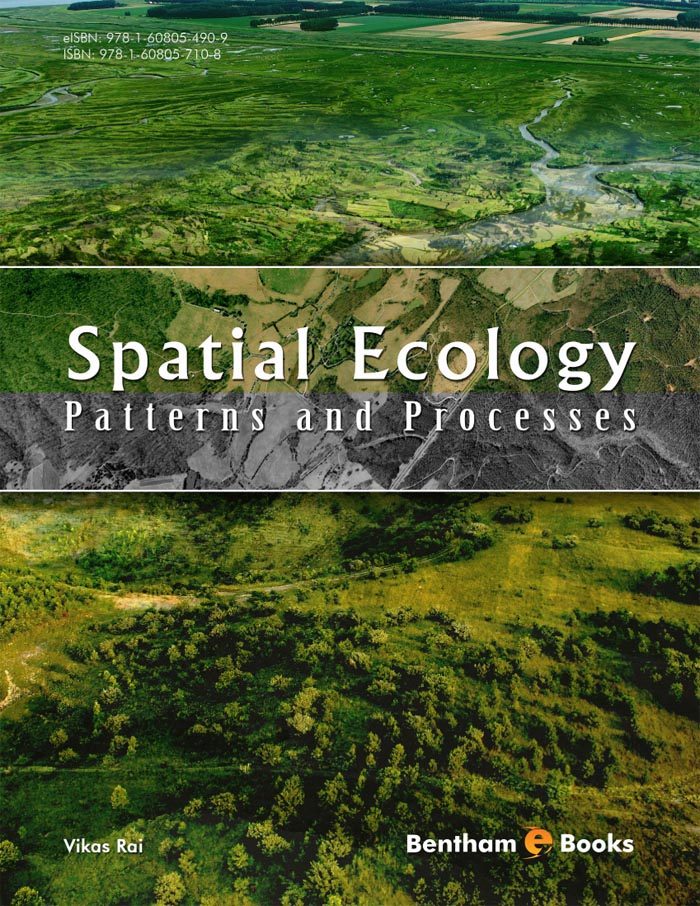Well–mixed models (WMM) have served ecological science to represent “microcosm” experiments. Application of non–linear dynamics to the analysis of WMMs revealed that these models are useful to clarify the essential dynamics of ecological systems represented by these microcosms. Since there exist several processes in ecological systems which are spatial in nature (e.g., random and directed movements of animals and plants), study of the role of space in ecological dynamics must be studied. The present eBook elucidates demerits of WMMs and throws light on how role of space can be incorporated in mathematical models of ecological systems.
Anthropogenic causes have affected Climate Change. Three main components of climate change at global scale are Fossil Fuel Combustion, 2) Nitrogen Cycle, and 3) Land Use/Land Cover Change. Under background conditions, biological nitrogen fixation in terrestrial ecosystems has been estimated at Tg (1 Tg = 102g) of Nitrogen per year globally (Soderlund and Rosswall 1982); nitrogen fixation in marine ecosystems adds 5–20 Tg more (Carpenter & Capone 1983), while fixation by lightning accounts for 10 Tg or less (Soderlund & Rosswall 1982). In contrast to this natural background, industrial nitrogen fixation for nitrogen fertilizer now amounts to > 80 Tg per year. An additional 25 Tg of Nitrogen are fixed by internal combustion engines and released as oxides of nitrogen, and Tg are fixed by legume crops. The global Nitrogen cycle has now reached the point where more Nitrogen is fixed annually by human–driven than by natural processes. Bazzaz and collaborators (1994) recognized early the ecological implications of increasing Carbon Dioxide concentrations. Elevated carbon dioxide increases photosynthetic rates of most plants with the C3 photosynthetic pathway in the absence of other limiting resources. It increases both photosynthetic water use efficiency and integrated nutrient use efficiency and is so developed that it is well equipped to handle.
Stability of an ecological system is a property which provides us an idea of the behaviour of the system when acted upon by small perturbations. Another closely related quantity is engineering resilience which is defined as the time taken by the system to return to its original state. Spruce budworm forest community presents an example of a system with low stability and high resilience. In regions, which witness benign climatic variations, populations are not able to withstand climatic extremes even though the populations tend to be constant. This exemplifies a situation of high degree of stability. Ecological resilience resides both in the diversity of the drivers and number of passengers who are potential drivers. Walker (1995) has shown how the diversity of functional groups maintains the ecological resilience. The research on discontinuities in ecological systems suggests the presence of adaptive cycles across the scales of a panarchy; a nested set of adaptive cycles operating at discrete levels (Gunderson & Holling 2001). A system’s resilience depends on the interconnections between structure and dynamics at multiple scales. Complex systems are more resilient when the threshold between a given dynamic regime and an alternate regime is higher (Ives & Carpenter 2007).
The eBook presents developments in mathematical theory which is relevant to study the effect of changes in habitat, soil and air quality.
ACKNOWLEDGEMENTS
The author is grateful to Prof. M. I. Ali Ageel for providing less teaching workload. Ranjit Kumar Upadhyay and Stephen Ellner are thanked for helpful discussions.
CONFLICT OF INTEREST
The author(s) confirm that this chapter content has no conflict of interest.
Vikas Rai
Jawaharlal Nehru University
India
E-mail: rvikas41@hotmail.com
REFERENCES
Bazzaz, FA, Miao, SL & Wayne, PM (1994) CO2–induced enhancements of co-occurring tree species decline at different rates. Oecologia, 96, 478–482.
Carpenter, EJ & Capone, DG (1983) Nitrogen fixation by marine Oscillatoria Trichodesmium in the world’s oceans. Pages 65–103 in Carpenter, EJ & Capone, DJ, eds. Nitogen in the marine environment. Academic Press,New York, USA.
Gunderson, L & Holling, CS (2001) Panarchy: Understanding transformations in systems of humans and nature (eds). Inland Press, Washington, DC,USA. Ives, AR & Carpenter, SR (2007) Stability and diversity of ecosystems. Science, 317, 58–62.
Soderlund, R & Rosswall, TH (1982) The nitrogen cycles. Pages 62–68 in O. Hutzinger, editor. Handbook of Environmental Chemistry, Springer–Verlag, Berlin.
Walker, B (1995) Conserving biological diversity through ecosystem resilience. Conservation Biology, 9, 747–752.

